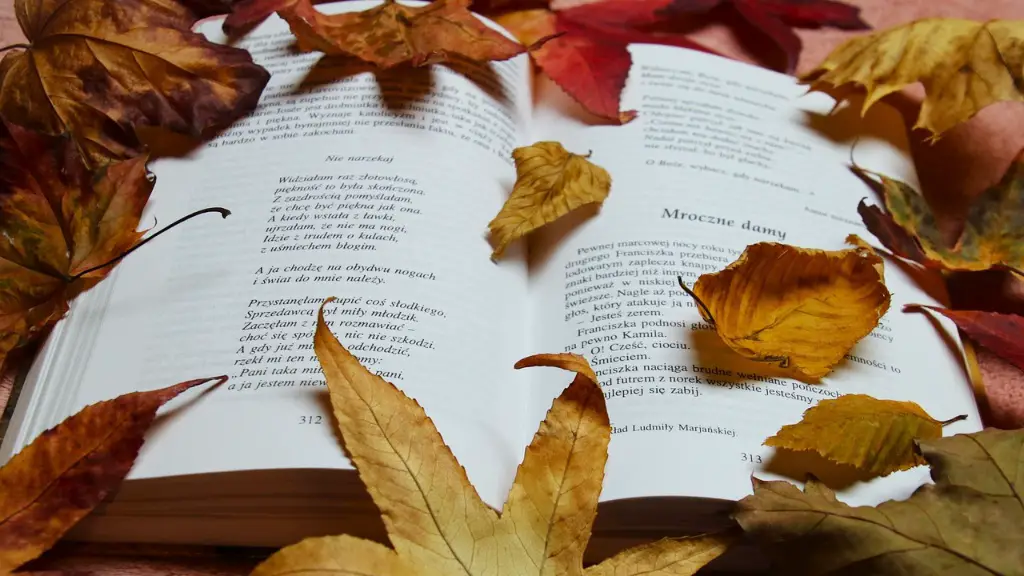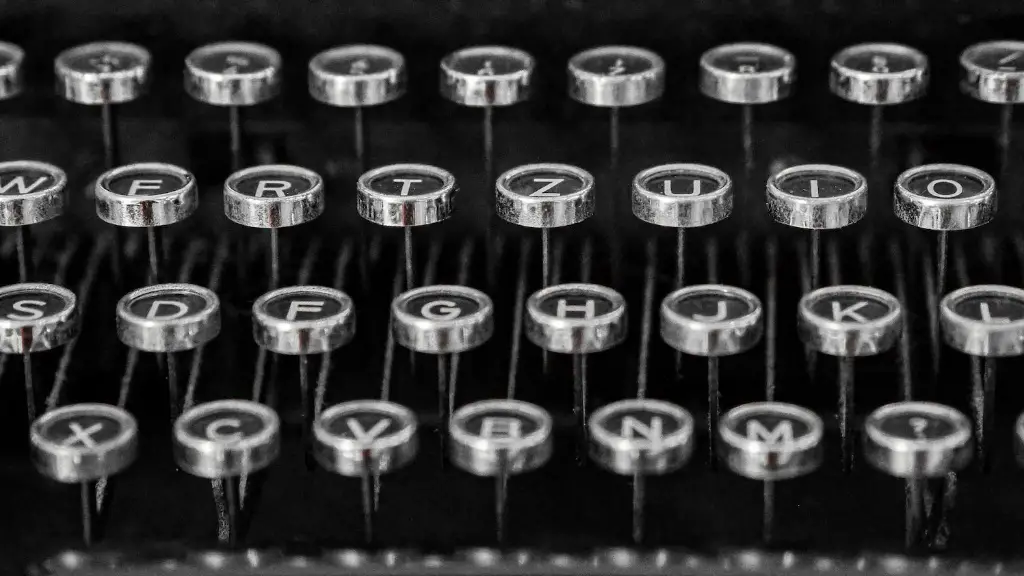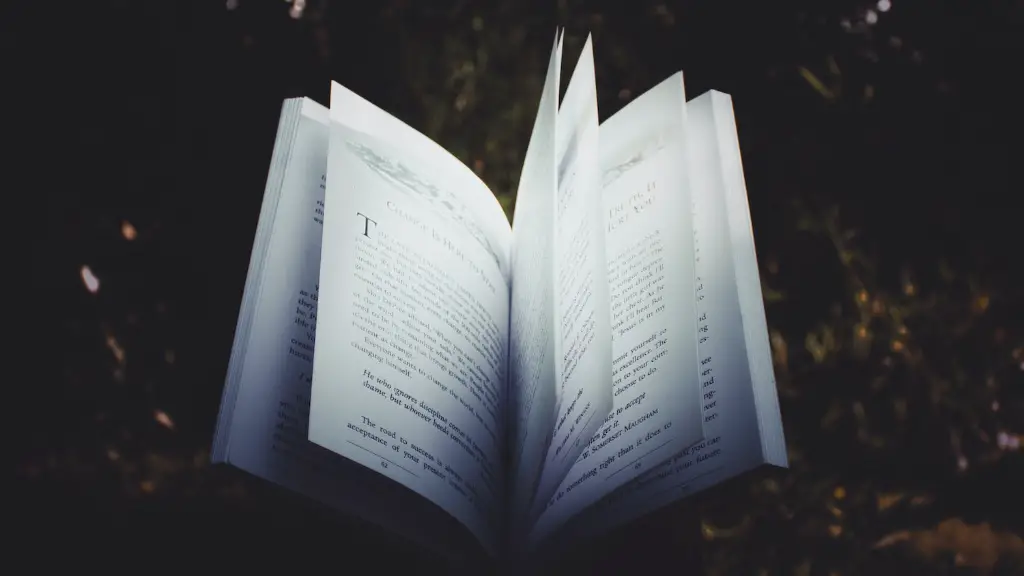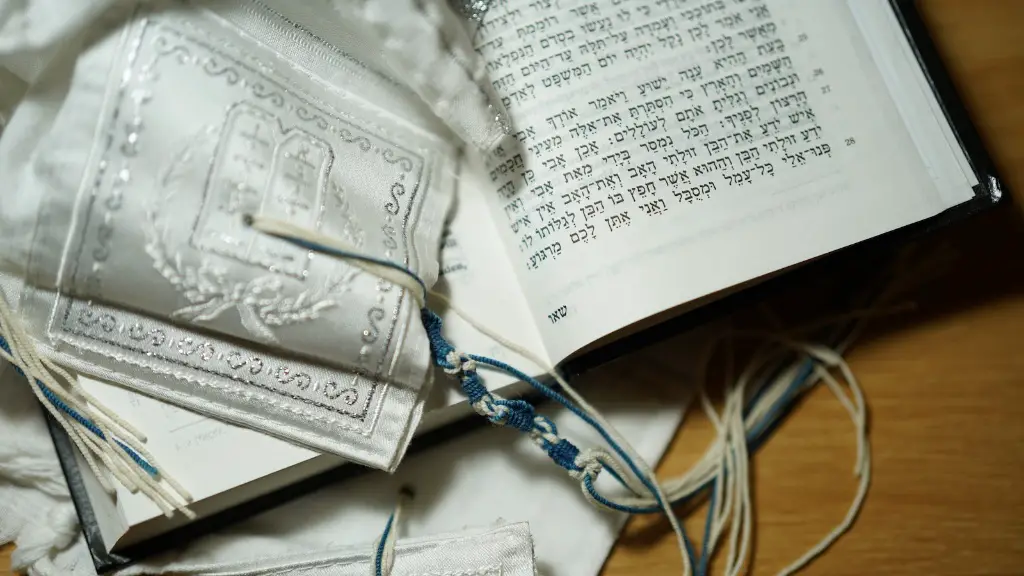What is scansion in poetry? Put simply, it is the systematic study of the patterns of rhythm or meter in poetry. Scansion has been relied upon by poets, writers and scholars for many centuries and remains one of the most vital elements in understanding and appreciating the power of verse. It offers a distilled analysis of the materials that poets use to create their most inspiring works.
The formation of a poetic line is typically made up of two parts: stressed and unstressed syllables. Together, these two components form an aesthetic balance, creating an expressive rhythmic pattern known as the meter. By recognizing the specific pattern of a poem, readers can appreciate its musical qualities, making the poem more meaningful and enjoyable. Scansion, then, is the practice of analyzing a line of poetry to determine what type of meter it employs, and which syllables are stressed and unstressed.
To engage in scansion, poets and readers break down the lines of poetry into individual feet. A foot is a unit of measurement used to differentiate between different types of meters. The number of syllables in a foot varies from meter to meter, but all feet have at least one stressed syllable (often marked by an apostrophe). For example, the most common foot in English prosody is the iamb, which is composed of two syllables with an alternating pattern of stress (the unaccented syllable followed by the accented syllable). Scansion allows poets and readers to recognize the pattern of a poem, and understand its musical effects within a larger context.
One example of meter commonly used in English poetry is dactylic pentameter. It is composed of five dactyls — three syllables of which the first is accented and the next two are not. A well-known example is John Keats’ poem “On First Looking Into Chapman’s Homer”, which employs dactylic pentameter throughout. By examining the poem line-by-line, readers can break down the lines and identify the meter, the feet, and the stresses.
By scanning a poem line-by-line, a reader can gain a deeper appreciation for its musical qualities. It allows for an analysis of the larger rhythmic structure — the organization and patterns of poetry. Scansion also uncovers the poet’s choices in terms of sound, allowing readers to see how the poet has blended formal elements with their artistic vision. Lastly, it helps writers understand their own poetic craft and the art of writing.
Recognizing Meter and Stanzas
In addition to recognizing patterns of meter, scansion also allows readers to recognize other features of poetry such as stanzas and caesuras. Stanford is a set of related lines within a poem; it is typically composed of two or more lines that share a common rhythmic structure. Alternatively, a caesura is a deliberate break in a poetic line, usually created by the placement of a pause or comma. Recognizing these elements through scansion allows readers to gain a greater insight into the poem.
Scansion also allows readers to recognize patterns in poetry and appreciate the nuances of its composition. By studying the meter and stanzas in a poem, readers can learn about the structure of the poem and begin to make connections between the poem’s content and its musical qualities. Through scansion, readers can gain valuable insight into both the poem’s form and its message.
Tools and Resources
Poets, scholars and students of poetry have a number of tools and resources they can use to study the patterns of meter in a poem. A handbook of meter and prosody is an invaluable resource for understanding the fundamentals of scansion. Additionally, there are various online tools for analyzing the meter of a poem. Such tools allow users to upload a text file containing a poem and get the scansion results for the poem.
For those seeking a more interactive approach to scansion, online platforms such as Scanning Meter are especially useful. Through this platform, users can learn how to scan a poem in a self-directed and interactive format that includes information on the fundamentals of scansion and walking through the steps of analyzing a poem. Additionally, the platform features practice activities with feedback to encourage analysis.
Although scansion may appear daunting to those unfamiliar with prosody, the practice can be quite rewarding. Through scansion, poets and readers can gain a deeper understanding of the musical elements of poetry. By analyzing the meter of a poem, readers can gain insight into the form and message of the composition and its rhythmic properties.
Exploring Rhymes and Repetition
Another common element of poetry is rhyme. To scan a poem for its rhymes and repetitions, readers must first identify the poem’s meter. The meter of a poem will often determine its rhyme scheme, which is the pattern of rhymes in a poem. Once the meter has been established, readers can identify the rhyme in each line, which allows them to gain a greater understanding of the poem’s musical pattern.
Rhyme can be a powerful tool for adding emphasis and creating a structure for the poem. Rhyming lines add a musical effect to a poem and allow readers to recognize repeating patterns and ideas. By recognizing such patterns, readers can gain a deeper appreciation for the poem’s content and structure. Additionally, rhyme can create a greater emotional resonance by emphasizing words and ideas.
In addition to analyzing rhyme, readers can also look for repetitive words and phrases within a poem. Repetition can be used to create a distinct rhythm and add emphasis to certain words or ideas. It can be used to create a sense of cohesion within the poem, allowing readers to make connections between seemingly disparate lines. By analyzing the repetition of words and phrases, readers can gain a greater understanding of the poem’s meaning and intention.
Exploring Allusions and Connotations
Scansion also allows readers to explore allusions and connotations in a poem. Allusions are references to people, places, and events that are intended to evoke a certain idea, thought, or emotion. By analyzing the pattern of a poem, readers can look for hints of allusions and the emotions they evoke. For example, a poetic line that contains a grim, cruel, or sorrowful stress may contain an allusion to a certain period of history or an event such as a war or a social injustice.
Connotations are the associations we make between words and ideas. Through scansion, readers can look for words that evoke certain emotions or thoughts and connect them to the poem’s meter. For example, a line consisting of a gentle rhythm may evoke a connotation of peace or tranquility, while a more chaotic meter could evoke a connotation of danger or distress. Scansion can provide readers with a better understanding of the poem’s connotations and how the poet is utilizing them.
Lastly, scansion can also be used to explore poetic devices such as wordplay and puns. By understanding the meter of a poem, readers can look for instances of wordplay and appreciate how such devices are used to emphasize a particular concept or idea. Additionally, recognizing the patterns of meter in a poem can help readers to determine which words should be emphasized for maximum impact.
Conclusion
Scansion is an invaluable tool for both readers and writers of poetry. It allows readers to explore the musical elements of a poem in order to gain a greater appreciation and understanding of its form and content. Scansion can also be used to explore the poetic devices used by the poet and the emotions they evoke. Lastly, it provides writers with a greater understanding of their own craft and the art of writing. By engaging in scansion of a poem, poets and readers alike can gain a deeper appreciation of the power and beauty of poetry.




